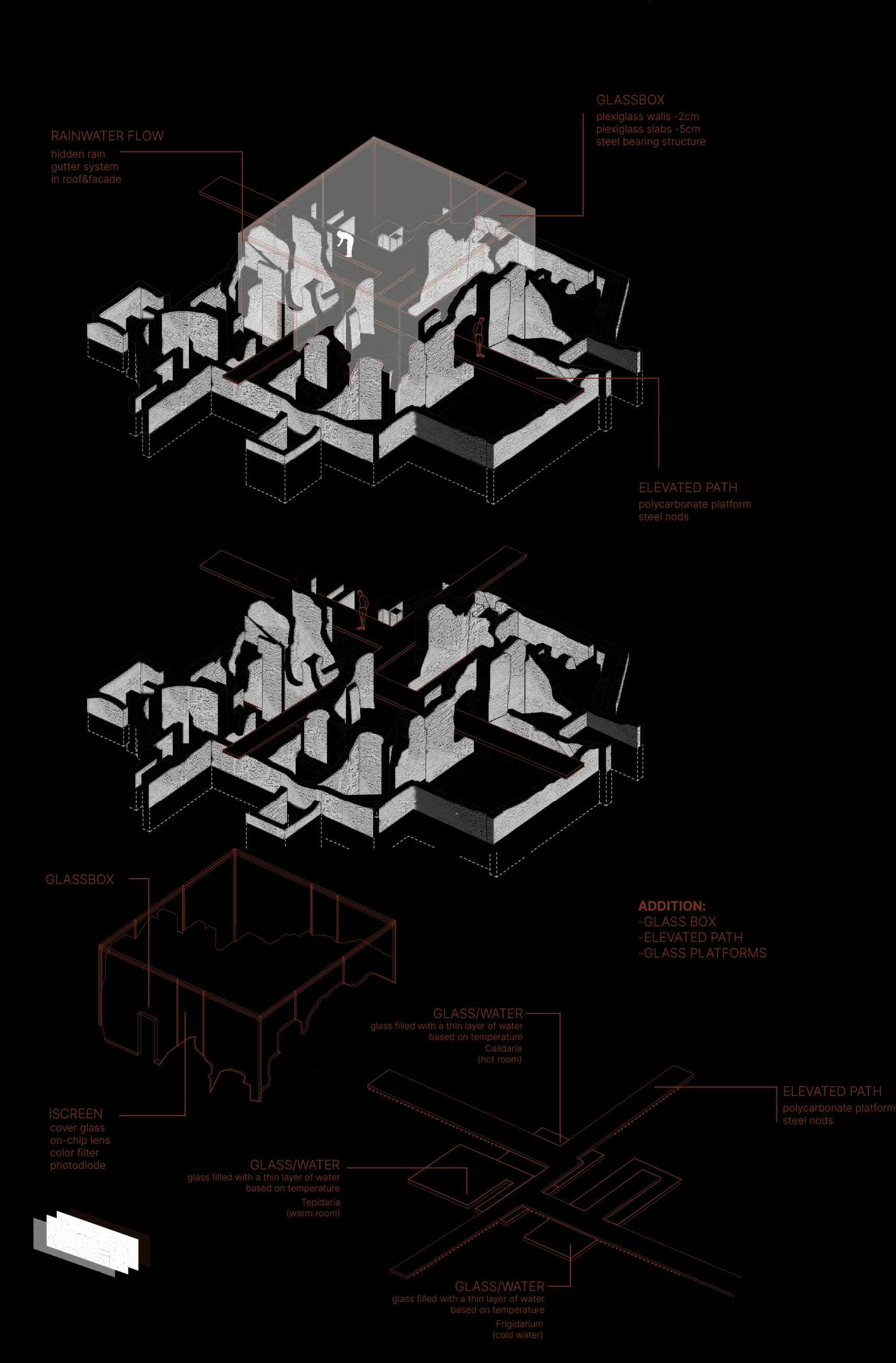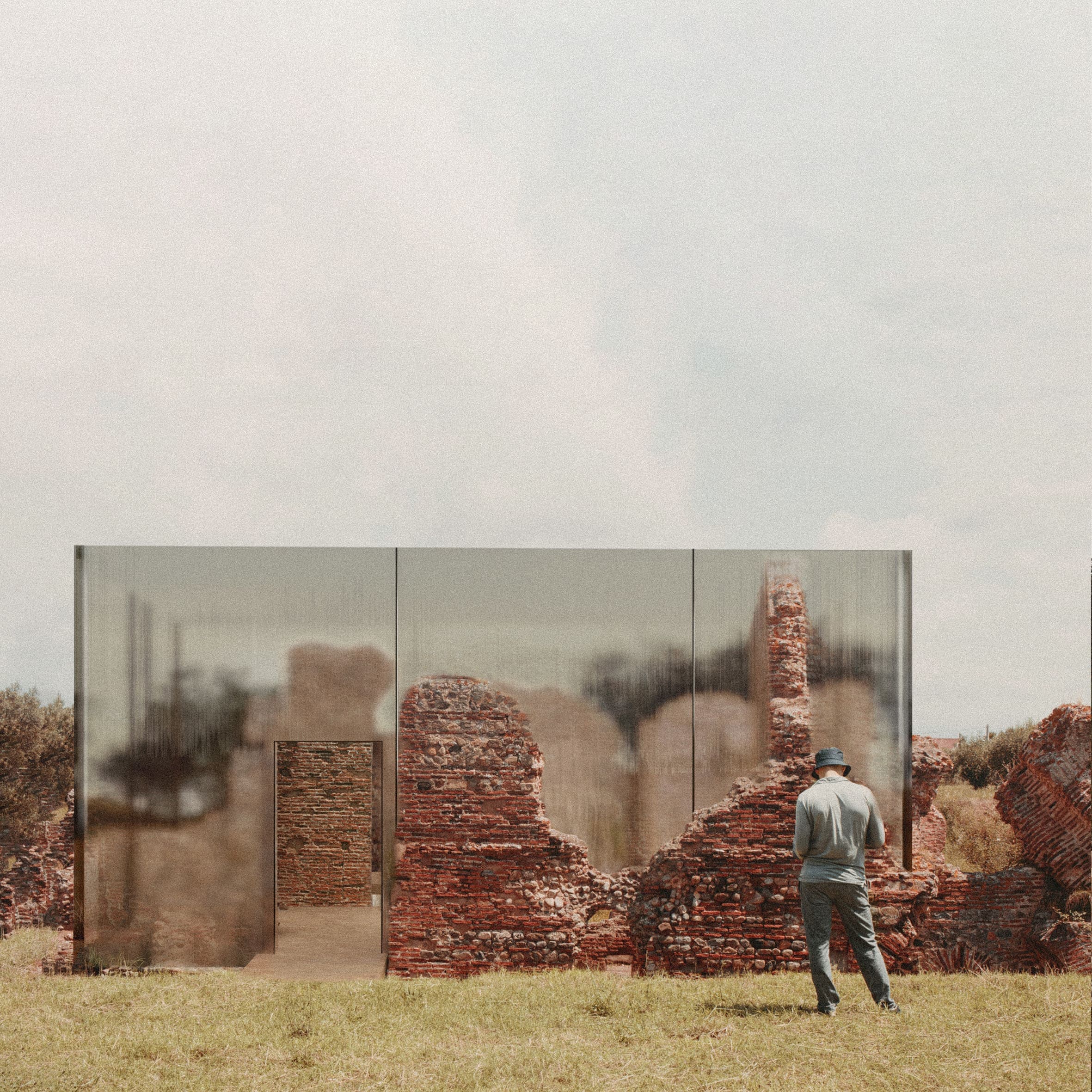Experiri
A roman revival inside out
Curinga, Italy | 2024
landscape design, museum design, urban design, adaptive reuse
Along the coastline of the enchanting region of Calabria, in southern Italy, there are the ruins of an ancient complex: the Thermal Baths of Curinga. Built during the Imperial Era, this archaeological site stands as proof of the advanced engineering, opulence, and socio-cultural significance of the ancient bathing complexes, offering us a glimpse into the fascinating world of the ancient Romans.
This project proposal considered these thermal baths as part of a broader strategy. This strategic proposal envisions the creation of a slow mobility path connecting various historical sites to the city of Curinga. Experiri focuses on sustainable transportation, cultural preservation, and community engagement, fostering a deeper connection between the past and present. This involves revitalizing ancient abandoned monuments, reconstructing ancient pathways, and incorporating interpretive signage to provide historical context. The proposed architecture for the Roman Thermal Baths of Curinga aims to seamlessly blend the rich historical heritage of ancient Roman baths with a modern, innovative approach. The design emphasizes a light and airy structure made predominantly of polycarbonate, symbolizing transparency and creating a visually striking juxtaposition between old and new. The key concept behind the design is to preserve the essence of Roman thermal baths while introducing a lightweight, transparent element. The use of polycarbonate allows for a delicate balance between historical preservation and contemporary expression. The structure's transparency signifies a metaphorical window into the past, inviting visitors to experience the ancient rituals while enjoying a modern architectural spectacle. Wooden walkways, suspended above the original Roman floor, guide visitors through the site without disrupting the archaeological remains. These pathways provide a unique perspective, enabling visitors to observe the historical foundations and to experience the atmosphere of the baths through the change in temperature as they move from the Frigidarium towards the Calidaria. The supporting framework of the structure is designed with minimalistic steel elements to maintain a lightweight aesthetic. The structural elements are strategically placed to offer support without overshadowing the transparency of the polycarbonate.
RE-USE Italy Competition: 4rth place, Honorable Mention
Collaborators: Enkelejda Zekaj & Edera Kana
Experiri
A roman revival inside out
Curinga, Italy | 2024
landscape design, museum design, urban design, adaptive reuse




